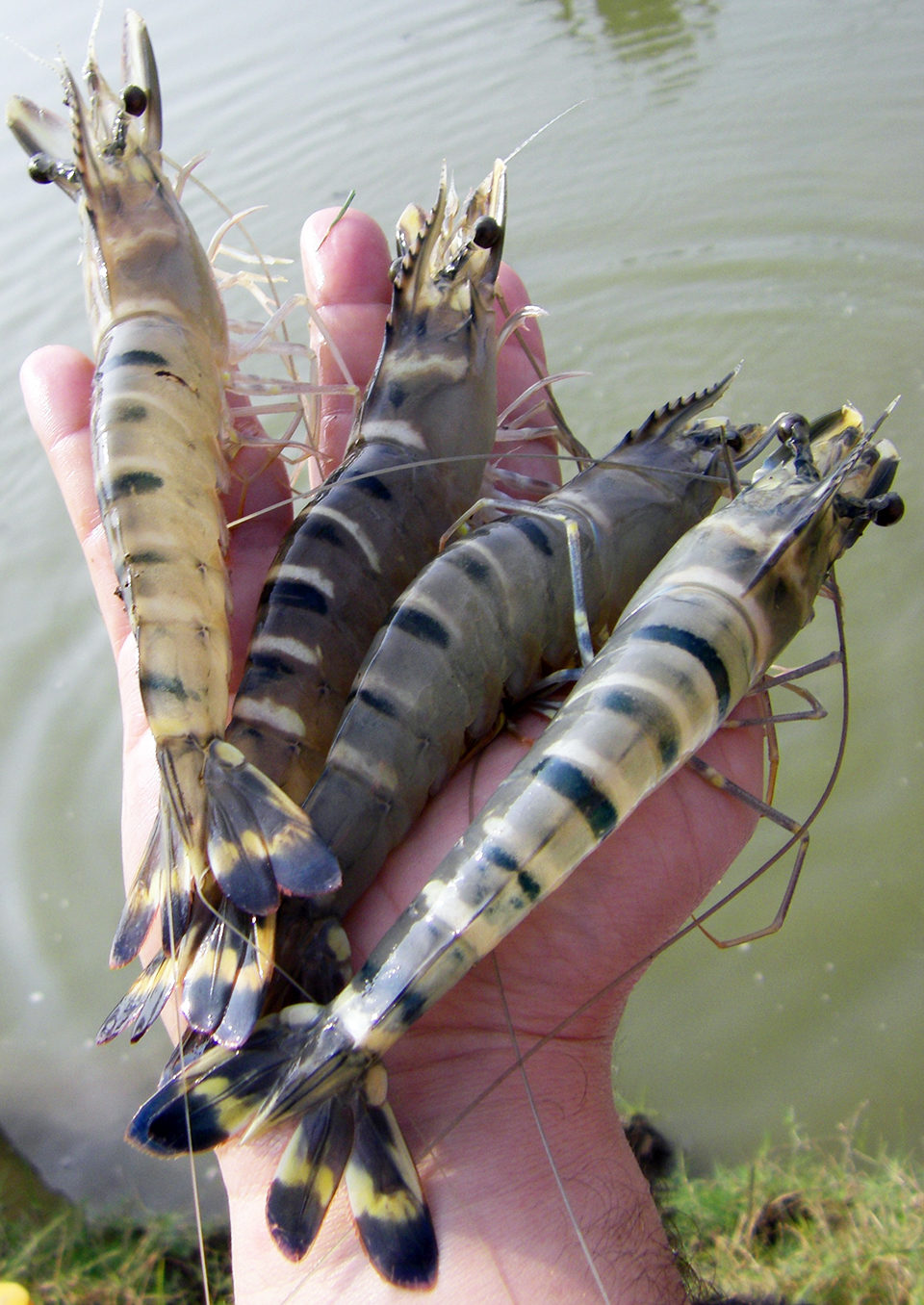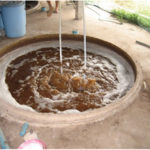Strains, concentrations and management are important factors

There is growing interest in the use of beneficial bacteria, probiotics, as an alternative strategy to antimicrobial compounds for disease prevention and control in aquaculture. These naturally occurring bacteria exert their beneficial effects to the host through competitive exclusion for adherent sites in the gut wall, competition with pathogenic bacteria for nutrients and stimulation of the host’s immune system. At the animal level, probiotics improve the growth and survival of fish and shrimp by modifying the host-associated or ambient microbial community.
In aquaculture, beneficial bacteria are not only used in feed applications to improve the intestinal microbial balance of the aquatic animals, but also in water applications. When added to the culture water, some beneficial bacteria act as so-called bioremediation agents by improving water quality and pond conditions while minimizing environmental degradation.
The selection of specific beneficial bacteria and their ability to thrive in the gut and aquatic environment play key roles in the success of their application. Table 1 shows a diverse range of beneficial bacteria used as probiotics in aquaculture.
Mayer, A diverse range of beneficial bacteria, Table 1
| Gram-Positive | Gram-Negative |
|---|
Gram-Positive | Gram-Negative |
|---|---|
| Bacillus | Paracoccus |
| Lactobacillus | Thiobacillus |
| Enterococcus | Nitrobacter |
| Pediococcus | Nitrosomonas |
| Carnobacterium | Photorhodobacterium |
| Lactococcus | Aeromonas |
| Bifidobacterium | Vibrio |
| Streptococcus |
Feed applications
A well-established intestinal microflora is crucial for the growth and health of the animal, since the microflora has impacts on nutrition, the prevention of pathogenic infections, the integrity and function of digestive organs, and the development of the immune system.
Thus, the management of the gut flora is important for the ability to prevent infections from enteric pathogens and to guarantee effective digestion of nutrients that results in good growth performance parameters. This can be done by the selection of beneficial strains and by minimizing the number of negative or potential pathogenic strains. There are various ways in which probiotics can be beneficial:
- Competitive exclusion of pathogenic bacteria. Adhesion and colonization of the mucosal surfaces are possible protective mechanisms against pathogens through competition for attachment sites and nutrients.
- Change of environmental conditions in the intestine. Increased production of volatile fatty acids and lactate lead to pH reduction, thus providing unfavorable conditions for pathogens.
- Production of inhibitory compounds. Various probiotic strains exhibit antibacterial activities against pathogens through production of lactoferrin, lysozyme, bacteriocins, etc.
- Modulation of intestinal immune response. The non-specific immune system can be stimulated by probiotics. Immunostimulants vary according to their mode of action and the ways they are used.
The efficacy and mode of action of probiotic products – competitive exclusion by Enterococcus faecium through adhesion and population of the mucosal surfaces, for example – have been demonstrated by researchers. In one study, groups of 20 juvenile white shrimp weighing 1 to 1.5 g were stocked into 200-liter glass aquariums and fed to satiation five times daily during a six-week period. A commercial diet was used as a control. The effect of 0.5 percent inclusion of probiotics containing Enterococcus on the health condition of the shrimp was observed.
Enterococcus was only found along the shrimp digestive systems in the groups fed the diets including this probiotic strain. It was also shown that the application of a commercial probiotic in feed was effective in reducing the number of total Vibrio bacteria in the hepatopancreas and intestine of white shrimp, which can reduce the risk of infection (Table 2).
Mayer, Total Vibrio species and Enterococcus in shrimp, Table 1
| Treatment | Hepatopancreas Total Vibrio (x 104 CFU/g) | Hepatopancreas Enterococcus (x 106 CFU/g) | Intestine Total Vibrio (x 106 CFU/g) | Intestine Enterococcus (x 108 CFU/g) |
|---|
Treatment | Hepatopancreas Total Vibrio (x 104 CFU/g) | Hepatopancreas Enterococcus (x 106 CFU/g) | Intestine Total Vibrio (x 106 CFU/g) | Intestine Enterococcus (x 108 CFU/g) |
|---|---|---|---|---|
| Control | 68.8 ± 19.5a | – | 94.1 ± 68.2 | – |
| Probiotic 1 | 1.7 ± 0.9b | 56.5 ± 23.2 | 29.5 ±19.4 | 7.8 ± 5.7 |
| Probiotic 2 | 1.2 ± 0.6b | 39.5 ± 10.2 | 32.5 ± 28.7 | 9.6 ± 6.5 |
Water applications
The microbiota of aquatic animals is extremely variable. In the aquatic environment, potential pathogens can maintain themselves in the external environment of the animals and multiply independently of the host animals.
Not only the microbial interactions with the environment have to be understood, but also the environmental impacts caused by aquaculture operations. The high biomass and feeding rates of intensive fish and shrimp farming produce large amounts of organic wastes. Accumulation and degradation of these organic waste compounds result in increased consumption of oxygen and facilitate the formation of toxic metabolites.
Excess nitrogen such as ammonia and nitrite in soil or water causes serious problems related to deteriorated water quality. Increases in toxic compounds also change the bacterial composition of water and soil in ponds, particularly increasing the presence of pathogenic bacteria and thus affecting the conditions of fish and shrimp.
Since water quality plays an important role in aquaculture systems, the industry requires better pond management/monitoring and sustainable solutions to minimize the environmental impacts of aquaculture. The application of probiotics and biodegrading microorganisms to the ponds has received increasing attention. This type of biotechnology is known as “bioremediation” – an environmental friendly approach to improve fish and shrimp production and pond conditions while minimizing environmental degradation.
Recent work by other authors has highlighted the use of multi-strain probiotic products in feed and water, which has led, even under Vibrio contamination conditions, to higher survival, enhanced feed conversion and better production.
Why is there still doubt?

Although there is experimental evidence that the prophylactic use of beneficial bacteria can improve health and performance of cultured aquatic species, there are still some doubts. Results can be affected by improper management methods and product quality, such as incorrect selection or application methods, bacterial concentrations below 108 colony-forming units, or poor bacterial stability during production and storage.
High levels of viable organisms and stability are important criteria for the evaluation of suitable strains. The safety of strains must be carefully assessed, as well, and transmission of antibiotic resistance or virulent plasmids must not take place. Of further great importance are the survival and growth of beneficial bacteria under culture conditions, and their ability to colonize the guts of the aquatic animals.
Additionally, the use of “fake” probiotics, unconventional manufacturing processes and/or an undefined blend of bacteria can lead to doubts about significant effects and benefits of probiotics.
Continuous research has been undertaken to develop new products for modern and sustainable aquaculture. For the production of a probiotic product in conventional production facilities, the seed should come from a respective master bank stored at -80 degrees C. The entire fermentation process should be performed under fully sterile conditions.
Perspectives
Probiotics for use in aquaculture production seem promising. However, the success of probiotic applications depends on the strains, concentrations and management used. Effective probiotics are based on selected strains and controlled production conditions. The microorganisms should contribute to efficient production in reliable ways, promote health and rapid growth of the cultured species, and be robust and efficient at waste processing. Poor results are many times related to low-quality and inadequate probiotics.
There is plenty of evidence that probiotics are effective tools for aquaculture application. It has been shown that well-defined probiotic strains with specific purposes are able to reduce pathogenic bacteria and undesirable waste compounds, thus improving fish and shrimp gut health, and enhancing performance and efficiency in production.
(Editor’s Note: This article was originally published in the May/June 2011 print edition of the Global Aquaculture Advocate.)
Authors
-
Elisabeth Mayer, M.S.
Biomin Holding GmbH
Industriestraße 21
3130 Herzogenburg, Austria -
Dr. Gonçalo A. Santos
Biomin Holding GmbH
Industriestraße 21
3130 Herzogenburg, Austria -
Dr. Pedro Encarnação
Biomin Singapore Pte. Ltd.
Related Posts

Health & Welfare
Assessment of supplemental Bacillus probiotics in whiteleg shrimp juveniles
Results of a feeding study supplementing probiotics in the diet showed that when the Bacillus species were complemented in an appropriate concentration into feeds, the growth and feed efficiency of whiteleg shrimp could be improved.

Health & Welfare
Bacillus probiotics benefit tilapia rearing under challenging conditions in Brazil
A recent study that evaluated the benefits of using probiotics with a balanced mixture of Bacillus bacteria strains to inhibit pathogenic bacteria in tilapia.

Health & Welfare
Bacillus probiotics improve hatchery, nursery production in EMS-hit Mexico
In early 2014, a trial to evaluate the effects of a mixture of Bacillus strains on early mortality syndrome bacteria during the larviculture and nursery phases for shrimp was carried out at a commercial hatchery in Mexico.

Health & Welfare
Culture water pre-inoculation of probiotics in Pacific white shrimp nurseries
This study showed that a longer inoculation of probiotics will improve shrimp postlarvae growth and survival, and that a new technique developed for more accurately estimating postlarvae weight can significantly reduce the food that must be supplied.


